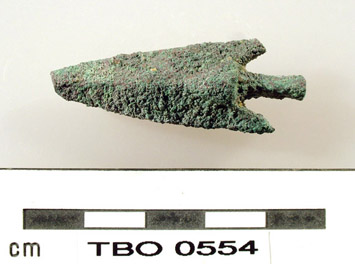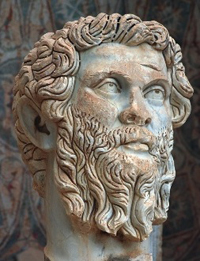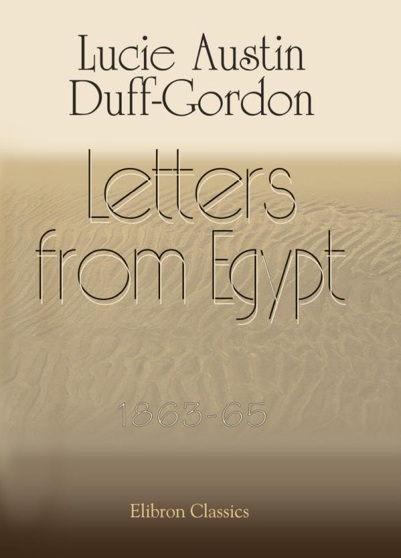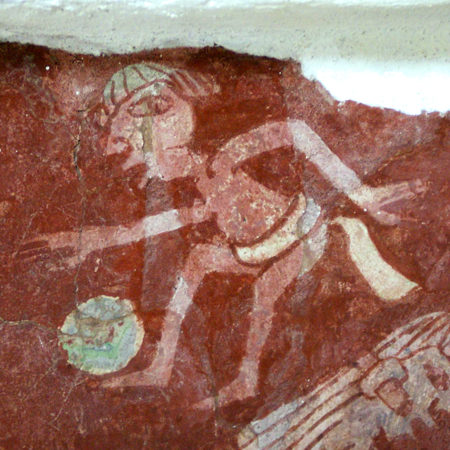Key Dates Tikal was at its height between 200 and 900 AD Tikal Guatemala Tikal, in the jungles of Guatemala is one of the largest archaeological sites and urban centres of the pre-columbian Mayan civilization and was at its height between 200 and 900 AD. The park contains 222 square miles of jungle, and the residential area of Tikal itself covers 23 square miles encompassing 1000s of structures of which very few have been excavated. The University of Pennsylvania took 13 years to uncover 10 square miles of architectural remains, so there are most likely a number of structures in…
-
-
It’s long been a common stereotype that Akhenaten was a pacifist, someone who avoided warfare when possible. If you read Heritage Key’s article on Nazi Egyptology you will see that the Nazis hate him for that precise reason. But recent research, presented this weekend at an Egyptology symposium in Toronto, shows that the Amarna leaders – including Akhenaten, King Tut and Nefertiti – all supported a sizable fortress in the Sinai desert. Located at Tell el-Borg it was a formidable bastion. It was 120 meters east-west by 80 meters north-south. The walls were four meters thick (at the base) and it…
-
Ethel Davies, author of Bradt‘s North Africa: The Roman Coast, has travelled the region extensively. It’s a fascinating area, full of well-preserved Roman ruins, as Ethel enthused in her interview with Heritage Key. The Romans signalled their arrival and dominance in North Africa with the destruction of Carthage in 146 BC. By the third century AD, there were as many as 600 Roman cities at the northern end of the African continent. Prior to this expansion of the Roman empire, the northern coast had been home to Phoenician, Punic and Greek settlers and traders. Here, she gives us her top…
-
Stonehenge leaps out from its West Country surroundings like Liberace in a dole queue, so it’s no surprise that Britain’s grandest prehistoric monument has been the focus of a myriad projects since the dawn of archaeology. So what is Stonehenge’s archaeological history? And what light has centuries of excavation shed on the enigmatic treasure? Aubrey Discovers (Some of) The Aubrey Holes Stonehenge’s recorded archaeological history begins at the turn of the 17th century, with a small dig carried out by the pre-eminent physician William Harvey. Yet as much as Harvey was a pioneer of medicine, he was hardly a dab…
-
Letters from Egypt, 1863-1865 by Lucie Duff Gordon In 1862 Lucie Duff Gordon, the cousin of Harriet Martineau and a friend of Caroline Norton, Meredith and Thackeray, headed to Egypt on a solo trip designed to rid herself of consumption. She spent the next seven years in a ruined house above a temple in Luxor. She integrated quickly, setting up a hospital and welcoming the people of Luxor into her house. Her story is told through her letters. This Elibron Classics book is a facsimile reprint of a 1865 edition by Macmillan. Adamant Media Corporation (6 Dec 2001) 386 pages
-
Tutankhamun’s Footwear Studies of Ancient Egyptian Footwear by André J.Veldmeijer, Alan J. Clapham, Erno Endenburg, Aude Gräzer, Fredrik Hagen, James A. Harrell, Mikko H. Kriek, Paul T. Nicholson, Jack M. Ogden, Gillian Vogelsang-Eastwood The discovery of Tutankhamun’s tomb by Howard Carter in 1922 is one of the most significant archaeological discoveries of all time. It took Carter and his team 10 years to clear the contents of the tomb and among the objects found was a large collection of shoes and sandals. The footwear is analysed here in detail for the first time since the discovery using Carter’s records and…
-
Key Dates 330 BC This wooden cult statue of Osiris dates from the Ptolemaic period, around 332-330 BC. One of the most interesting aspects of this life size statue of the god Osiris is that it was quite likely used as a cult statue for worship. It is in wood, finished with plaster or gesso, and was painted; originally, the body of the god was wrapped in linen bands exactly like an Egyptian mummy, so that the statue showed the entombed Osiris as god of the dead or of the afterlife. The eyes are inlaid with glass and stone, giving…
-
It might have taken Europeans until the 19th century to make rubber, but Mesoamericans were playing with bouncy balls back in 1,600 BC. And not only were pre-Columbians the world’s first polymer scientists, but new research suggests they fine-tuned their discovery for different uses. According to Professor Dorothy Hosler and Michael Tarkanian of the Massachusetts Institute of Technology (MIT) cultures like the Mexica, Olmec and Maya perfected a chemical processing system to create rubber with varying qualities. Bouncy rubber was used for rubber balls, used during the legendary Mesoamerican ball-game (see more ancient sports), while axe-heads were fastened with a…
-
Key Dates 1186 BC The papyrus dates from the XX Dynasty of Ancient Egypt, which lasted from 1186-1069 BC. It was discovered in the early 19th century. Key People It was probably created by a painter from Deir El-Medina village. When French scholar (and translator of the Rosetta Stone) Jean-François Champollion viewed the papyrus in Torino in 1824, he described it in his notes as: “an image of monstrous obscenity that gave me a really strange impression about Egyptian wisdom and composure.” Key People: Jean-François Champollion The Turin Erotic Papyrus is a famous (or rather, infamous) 12th/11th century BC Egyptian…
-
Think you know all there is to know about these goliaths of the ancient world? Heritage Key picks out ten key facts about pyramids. 1. There are actually 118 pyramids in Egypt. Sure, you might have heard of Khufu‘s, or Khafre’s – or even Djoser’s incredible Step Pyramid at Saqqara, the first known pyramid ever built. But what about the ones which don’t grab the headlines: Amenemhat III‘s Black Pyramid of Dashur looks more like Ayer’s Rock than an Egyptian tomb, and Sahure’s fine mausoleum in Abusir once stood 47m high. 2. The 118th pyramid was unearthed by Egypt’s most…








